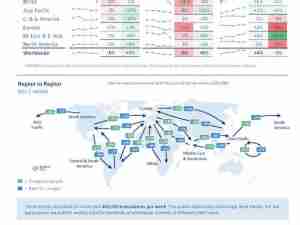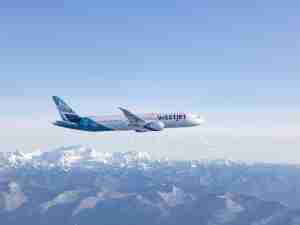Duty-Free Bonanza for China’s Airports Drives Extended Rally
By: | Aug 18 2017 at 12:22 AM | Air Cargo
Chinese airports are in fashion among equity investors, and this trend may be enduring.
Already benefiting from a surge in international and domestic travel, the nation’s listed airports have received an extra boost this year: the first increase to domestic takeoff and landing fees in a decade and a doubling in the commissions they can charge duty-free operators.
Such positive news has already shown up in their share prices. Beijing Capital International Airport Co. has climbed 54 percent this year, while Shanghai International Airport Co. and Guangzhou Baiyun International Co. are up at least 36 percent. Despite those gains, they’re still undervalued as the market has underestimated the impact from the new duty-free contracts, which don’t kick in until late this year, according to Nick Langley, co-chief investment officer at RARE Infrastructure, which is 75-percent owned by Legg Mason Inc.
“It’s our view that the earnings growth will be reasonably substantial for the next few years and we don’t believe the market has priced that in today,” said Sydney-based Langley, who’s recently been adding to his holdings of Chinese airports. “We’re expecting pretty substantial upsides in share prices, even from here.”
Chinese regulators have allowed airports to run open tenders this year for duty-free concessions. Under new agreements finalized in June, operators at Beijing airport will share almost half of their sales with the airport operator, compared with about 20 percent earlier. The concessions have also increased by a similar magnitude at Guangzhou airport, while leases for Shanghai aren’t expected to be renegotiated until 2019.
In addition to the revenue bump for the airports, the new market-based approach will drive a more commercial mindset from duty-free operators that should lead to better retail offerings, Langley said.
Greater Impact
“The impact on earnings is actually greater than what the market had initially thought,” said James Teo, an analyst at BNP Paribas SA in Singapore. “The market will rally further when they see the actual earnings improvement.” Teo is the No. 1 analyst in Bloomberg rankings for Beijing and Shanghai airports. While Beijing, due to its large retail space, is the biggest beneficiary of the new duty-free contracts, Shenzhen Airport Co. is the major winner from the increase to domestic aeronautical fees because it has a lower proportion of international traffic than its peers, said Teo.
Shenzhen Airport, whose share price rallied as much as 23 percent year-to-date by early July but has since pared more than half of that gain, is a “close second” to Beijing among his favorite Chinese airports, he said.
Shenzhen and Guangzhou airports were both up 0.5 percent as of 12:05 p.m. local time on Friday when Chinese shares fell. Beijing airport declined 0.2 percent, while Shanghai airport dropped 0.7 percent.
Narrowing Gap
There could also be further increases in the domestic takeoff and landing fees in the coming years, said John Lin, a Hong Kong-based portfolio manager at AllianceBernstein Holding LP. The difference between domestic and international levies is greater in China than many other places, he said.
“There was a gap in the first place because it was partially driven by a policy preference to develop the domestic travel market,” Lin said. “Now that the passenger market is growing healthily, we might see that gap starting to close.”
While the government has given a fillip to Chinese airports this year, it also poses a risk. A second airport for Beijing, slated for completion in 2019, would threaten future cash flows of Beijing airport if authorities decide to fold it into the existing airport company, said Samir Mehta, a senior fund manager at JO Hambro Capital Management in Singapore.
“So far, indications have been that it’s unlikely the listed company will be involved,” said Mehta, who holds shares in Beijing airport. But “shareholders are unlikely to have a big say in what the decision is going to be,” he said.
Travel Boom
The new airport will cap future passenger growth at Beijing airport, while Shanghai and Shenzhen have better expansion potential, said Lily Zheng, a research analyst at AllianceBernstein in Hong Kong.
More than 5 million passengers passed through Pudong International Airport, managed by Shanghai International Airport, from July 1 to August 15, a record and 2 percent more than the year-earlier period, the Shanghai Daily reported Friday, citing figures supplied by the airport.
Fueling the growth in Chinese airports in recent years has been a travel boom led by rising incomes and urbanization. China’s travel market was equal to 9 percent of gross domestic product in 2016 and is forecast to grow at an annual rate of 8 percent in the next decade, according to data from the World Travel & Tourism Council. If retail offerings improve, those Chinese tourists may spend more money at the country’s airports.
“The best way to describe airports is that they’re shopping centers with runways attached,” said JO Hambro’s Mehta. “And unlike in other industries, the airport shopping experience is unlikely to be dramatically impacted by the Internet.”






